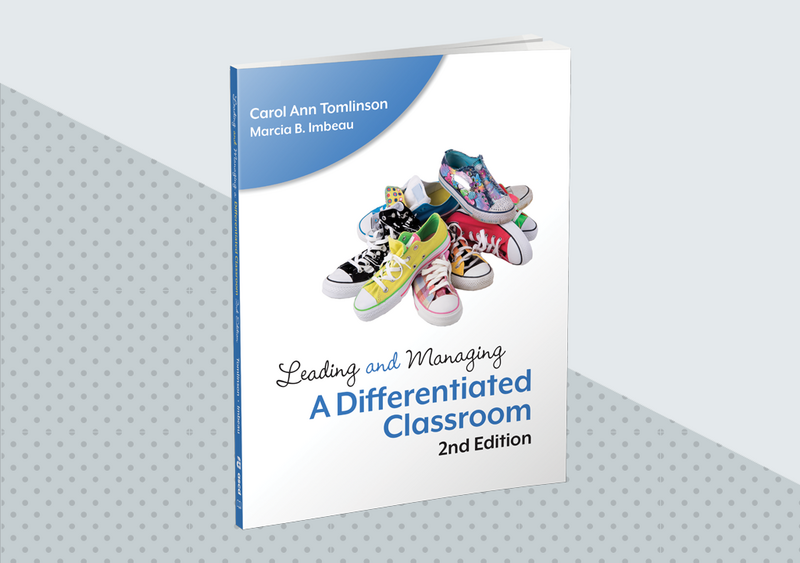In 1968, my first teaching job in a rural K-12 school began midyear with a shock: The assistant principal, who took me to “my” classroom of high school sophomores and juniors, fired the teacher who answered the knock on his door. The dismissed teacher couldn’t go home because he carpooled to work and it wasn’t his week to drive. The only comment he made to me all day was, “Well, if they think you can do better with these kids than I can, then have at it.”
Meanwhile, the class was in chaos: I watched students alternately crawl out of the classroom windows to enjoy some fresh air, attempt to light some freestanding bulletin boards on fire, and engage in language that would have caused me to turn off a TV program. As I sat there observing from the back of the room (I had the luxury of not "teaching" on my first day), I grew terrified of the kids and of the responsibility I had taken on. The only thought I could produce in my brain looped there for eight hours: “I don’t need a job this badly.” But I did.
I returned to the drab-looking school building the next day with virtually no useful content knowledge, no pedagogical knowledge, and no rules for “classroom management” (note: I'm not a fan of the term "classroom management"—it suggests an "us vs. them" mentality that encourages teachers to believe their job is to "manage" students). But I did have some worthy, if wholly undeveloped, instincts. Those instincts saved me from my worst fears and bought me some time to begin understanding what “passable” teaching looks like—and, over the years, what aspirational teaching looks like.
As each week passed, my vision and sense of what it means to be a teacher began to develop. Although I rarely understood cause and effect in the moment, the next six months in the company of those high school sophomores and juniors helped me lay a foundation for what we often call “classroom management.” Here are four lessons I learned.
1. See, Hear, Value, and Accept Each Student as an Individual
Effective "classroom management" and effective teaching begin with a teacher who is, to a significant degree, smitten with the students as individual human beings and relishes the opportunity to make a difference in their lives.
Even at the high school level, young people need to feel seen, heard, accepted, and valued. They experience learning in a far more motivating context when they see that their teacher wants to teach them important things than when they conclude that the teacher is largely about teaching content and that their presence in the classroom is secondary. (I have not found that to be different with adult learners.) This caring is the foundation of trust between students and teachers and thus the foundation of effective “classroom management” and effective teaching.
Much of the reason my students and I not only survived together that first year but sometimes even thrived together had to do with their sense, from the beginning, that I genuinely liked them, that I wanted to be there. On the first Friday of my first full week teaching, as students in my history class began to leave after the bell rang, one student stopped before she got to the door, turned around, looked at me skeptically, and said, “Are you gonna come back on Monday?” I smiled and replied, “I’m not only coming back, but I’m already looking forward to it.” She looked at the floor and then at me and said, “Me, too.”
2. Structure the Class in Service of Learning
Learning requires structure and order, but the structure and order should be in service of learning—not for the sake of demonstrating who’s in charge.
If the first day of school is about going over classroom procedures and listening to the consequences of violating them, students will find it difficult to feel that the environment is safe and welcoming or that the teacher finds them trustworthy.
Young people, like all of us, need structure in their lives but how and why teachers go about establishing that order makes a great difference.
Much of the reason my students and I not only survived together that first year but sometimes even thrived together had to do with their sense that I genuinely liked them, that I wanted to be there.
As I met my students at the door when they entered class on my first "real" day of teaching, I welcomed them with a smile and pointed each of them to a seat in the classroom that matched a seating chart I held in my hand. “This will help me learn your names much faster and get to know you sooner,” I said. “Don’t worry, though, we’ll be moving around often during classes, so you won’t feel stuck where I’m asking you to sit.” I took attendance using the seating chart without calling out names. They noticed. Then I said, “I have a crossword puzzle I want you to work on with me today. We can solve it better if we work together.” There was no lag time; we just began an adventure together. But the structure of the seating chart changed some destructive dynamics.
It was important, in retrospect, to begin the class with some organization and positive purpose. The seating chart surprised the students and what followed damped their inclination to engage in unproductive behavior.
3. Effective Teaching Naturally Leads to Effective “Classroom Management”
Effective “classroom management” is not a separate entity from effective teaching. If “what” we teach and “how” we teach are lively, varied, sometimes surprising, often joyful and meaningful, both teachers and learners are largely relieved from the burdens implicit in teacher-student power struggles.
As noted above, my first lesson plan for my history students had only a feeble connection to the course, world history. I gave them a crossword puzzle and posted it on the chalkboard on a giant sheet of paper so we could complete it together. It completely absorbed their attention.
Clue #1 across was 3 letters: “Our Country (abbr.).” It was quickly evident that the students didn’t know how a crossword puzzle worked, didn’t understand the concept of abbreviation and certainly not the abbreviation for abbreviation—and that they were uncertain about the name of the country in which they had lived for 15 years. They were, however, intrigued with the way the crossword puzzle looked, how it could be solved, and the idea that they could have a reasonable dialogue about solutions with a teacher and among themselves. There was no misbehavior of any kind, no disrespectful language, no interest in what was on the other side of the windows.
4. Plan Proactively for When Lessons Go South
When we plan proactively for predictable classroom malfunctions, both we and our students are likely to be able to respond in ways that prevent derailments or at least maintain the dignity of those involved.
We eliminate many, if not most, of the reasons students act out when we have a plan for when a lesson goes awry, when students get restless, whether to address (or ignore) minor or more significant behavioral issues, when lessons are just a bit briefer than the general attention span in a class, or when the work we ask students to do is neither consistently too difficult nor consistently too simple for their various points of entry into the work.
The crossword puzzle rapidly led me to the early insight that it was counterproductive, if not lethal, to teach ancient and medieval history when students lacked the context of their own history. That led me to search for concepts, events, or practices the students seemed to have in common that might provide a context for thinking about the past. The most evident pattern I could find was that religion was a focal point of their families. While the “brands” of religion they represented varied a good bit, it seemed, from asking about their weekends and spare time, they were all Protestant.
The students never questioned why we skipped nearly half of the textbook to begin our work with the Reformation. Nonetheless, they found the idea of fractures and factions in religion interesting. We shared familiar beliefs, practices, rituals, and celebrations in our various traditions. We looked for commonalities and differences in the practices of religion before, during, and after the Reformation. We took a field trip that was a couple of hours away from the school to interview and converse with a rabbi and a priest about their practices (no one in the class had ever known practitioners of Catholicism or Judaism and a good number of them had never been on a field trip).
Our launch into history was both unfamiliar and familiar. Its content was personal and remote. It was successful and sometimes hilariously unsuccessful. We sometimes resembled a community of learners despite my shortcomings as a young teacher.
Humanizing the Classroom
I still dream about having a chance to reteach that year. There are so many things I would change. And yet, I never again saw the unruly, trash-talking, defiant teens with whom I spent the last day in my adult life when I was not technically a teacher.
Perhaps the most important lesson they taught me was that effective "classroom management"—and, in fact, the better part of effective teaching—pivots on humanizing the classroom.
Leading and Managing a Differentiated Classroom, 2nd Edition
Explore the central priorities of differentiation and learn practical guidelines for making effective student-centered, academically responsive instruction a reality.









